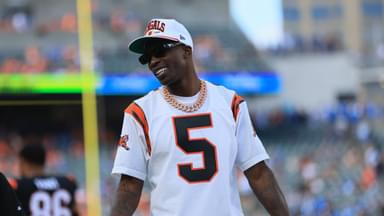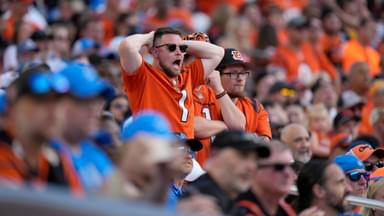After a long and drawn-out standoff, the inevitable has finally happened: the Bengals are open to trading their All-Pro pass rusher, Trey Hendrickson. Failed contract negotiations have pushed the team to seek trade packages, a move that hardly comes as a shock. Cincinnati has long carried the reputation of being one of the league’s stingiest franchises, often undervaluing its own talent rather than paying market price.
Advertisement
Hendrickson, the NFL’s sack leader over the past two seasons with 35 takedowns, refused to budge from his asking price. He made it clear he loves football, loves the Bengals, but won’t hesitate to play elsewhere if it means being paid what he’s worth. That raises the question—if the Bengals were always open to trading him, why wait until now? Why not move him before the draft and stockpile extra picks?
That’s exactly what Shannon Sharpe wants to know. He believes Cincinnati assumed Hendrickson would report regardless, just as he did last season, without securing a new deal. Instead, Hendrickson stood firm. Sharpe argues the Bengals should’ve dealt him earlier, maximizing their return instead of dragging their feet.
“This is what I don’t understand. You knew you weren’t gonna pay him. What they thought he was going to do what he did last year, ‘Oh, he’ll come in.’. He told you he wasn’t. I don’t understand why would you not move him before the draft and get somebody? Get a draft pick.”
Even Chad Johnson, one of the Bengals’ fiercest defenders, admitted he doesn’t understand the front office’s approach. He suspects the team thought Hendrickson would eventually cave, take whatever was on the table, and move on. But Hendrickson, recognizing he’s playing the best football of his career, chose to handle it like a business.
According to Ocho, the Bengals’ reluctance to pay their defensive star comes down to philosophy. Yes, Hendrickson led the league in multiple defensive categories and was arguably their biggest defensive playmaker, but the unit still struggled to stop teams. Cincinnati’s identity has always been its offense, and the front office felt it made more sense to invest heavily in Ja’Marr Chase and Tee Higgins to keep Joe Burrow’s arsenal intact.
“Obviously, he is the one who understands the business. You got to hit while the stove is hot. This is his time to hit. But then, you also look from their viewpoint- ‘Hell, you had 17 sacks last year, but our defense was still horrible’. But our offense was phenomenal.”
In other words, Hendrickson became the odd man out, not because of his performance, but because of the Bengals’ priorities.
It’s hard to imagine Trey Hendrickson suiting up for the Bengals again. While his love for the team is clear, he also understands his worth and the unforgiving business side of the NFL. The franchise’s mishandling of negotiations has fractured their relationship, leaving Hendrickson in no mood to play the role of underpaid loyalist.
After the way this saga has unfolded, it’s tough to see any player wanting to stick around under similar circumstances. And with several teams in need of an elite pass rusher and willing to pay, Hendrickson won’t lack suitors.
The complication lies with Cincinnati. The Bengals aren’t just frugal; they’re notoriously stubborn. They’ll almost certainly demand steep draft capital in return, a stance that could slow down or even stall a deal. The only real path forward is if the front office softens its position on guaranteed money, the sticking point that matters most to Hendrickson. If not, both sides may soon be heading for an inevitable split.








